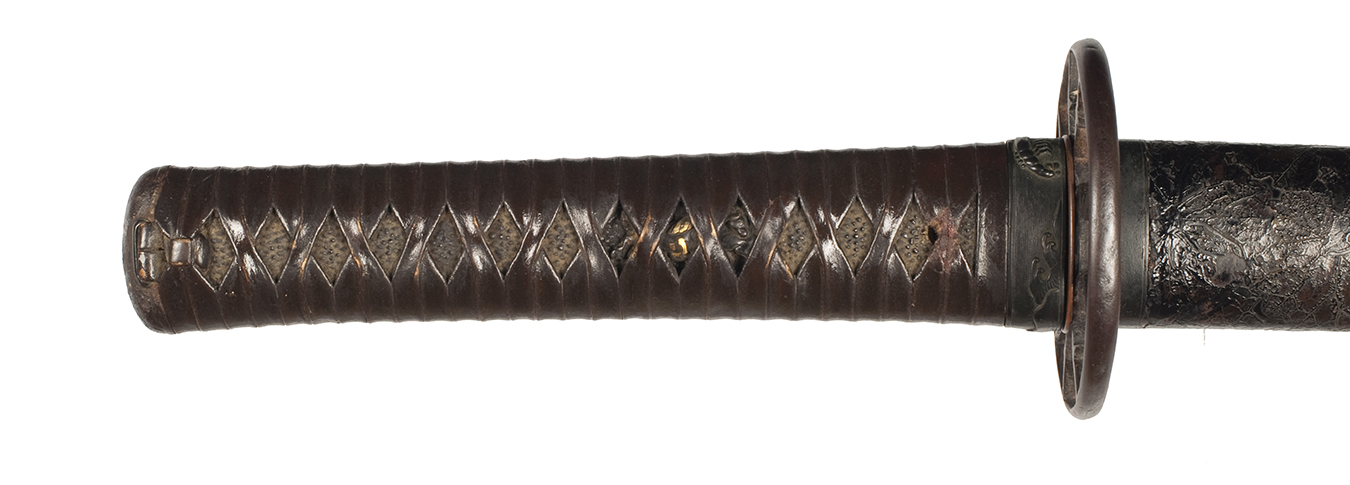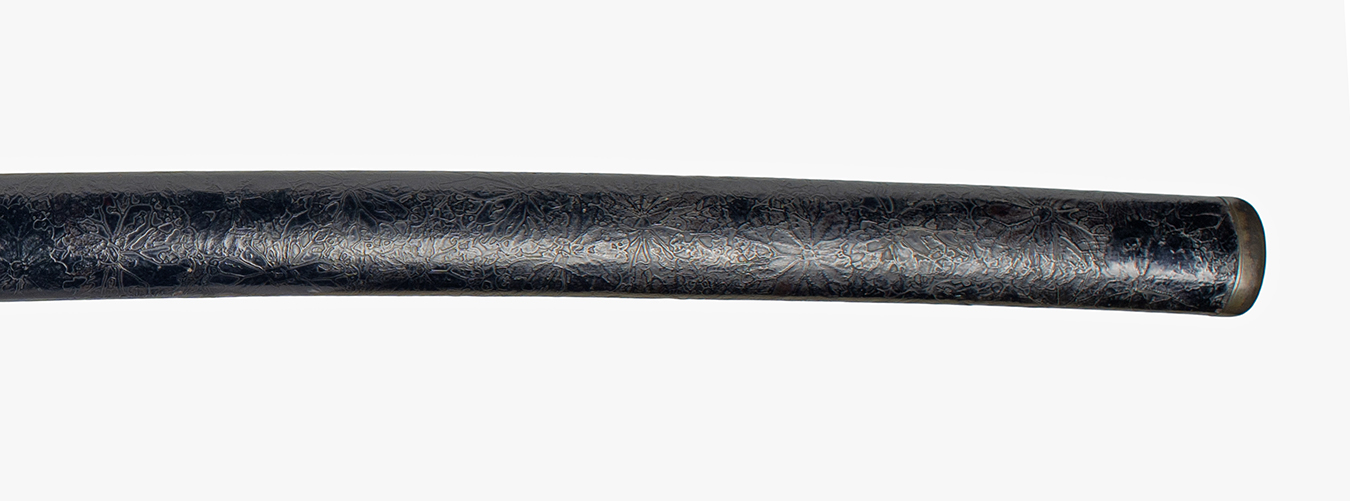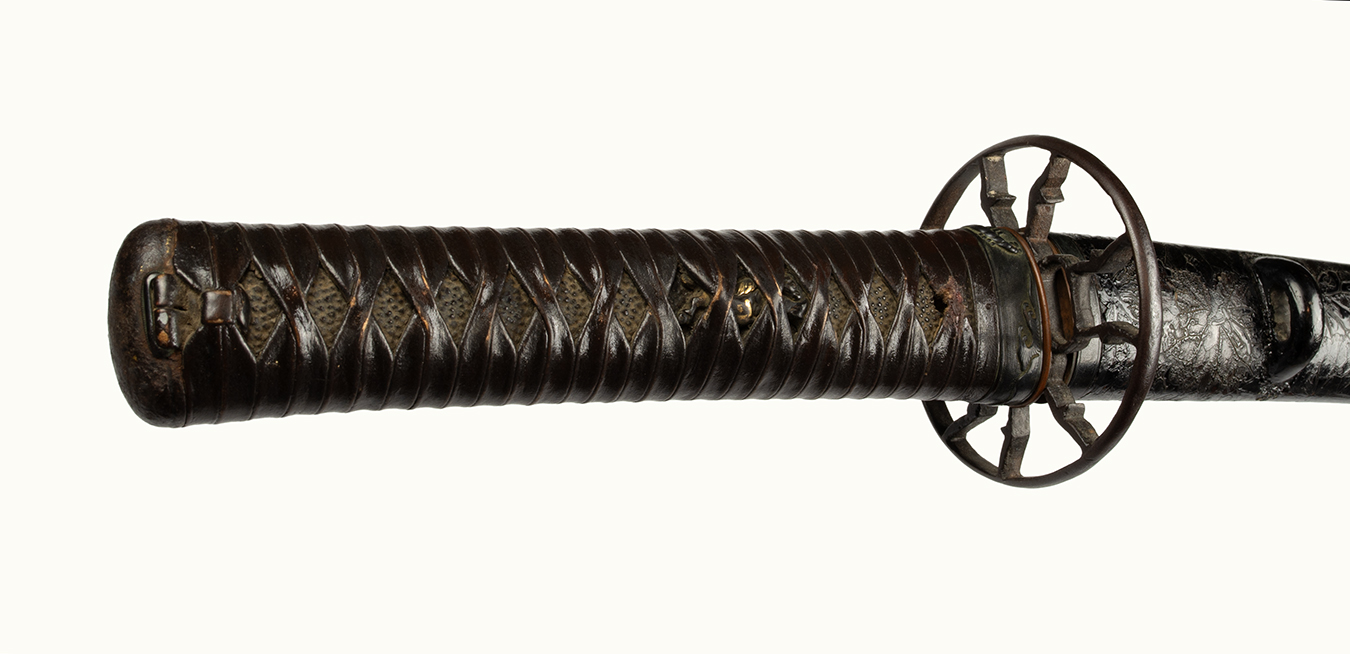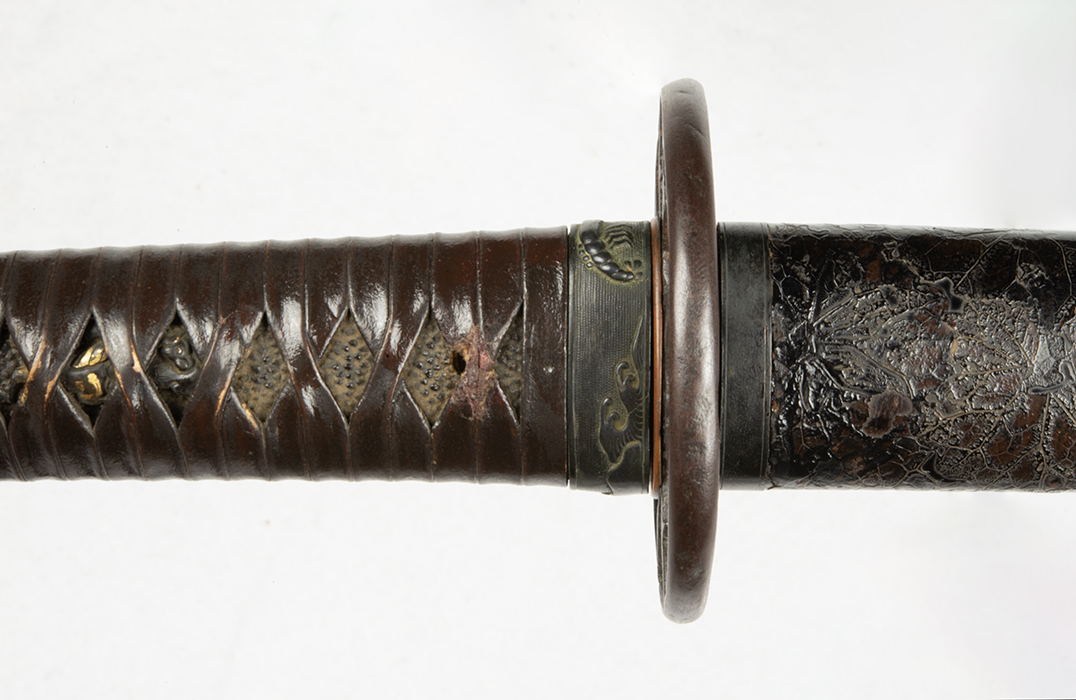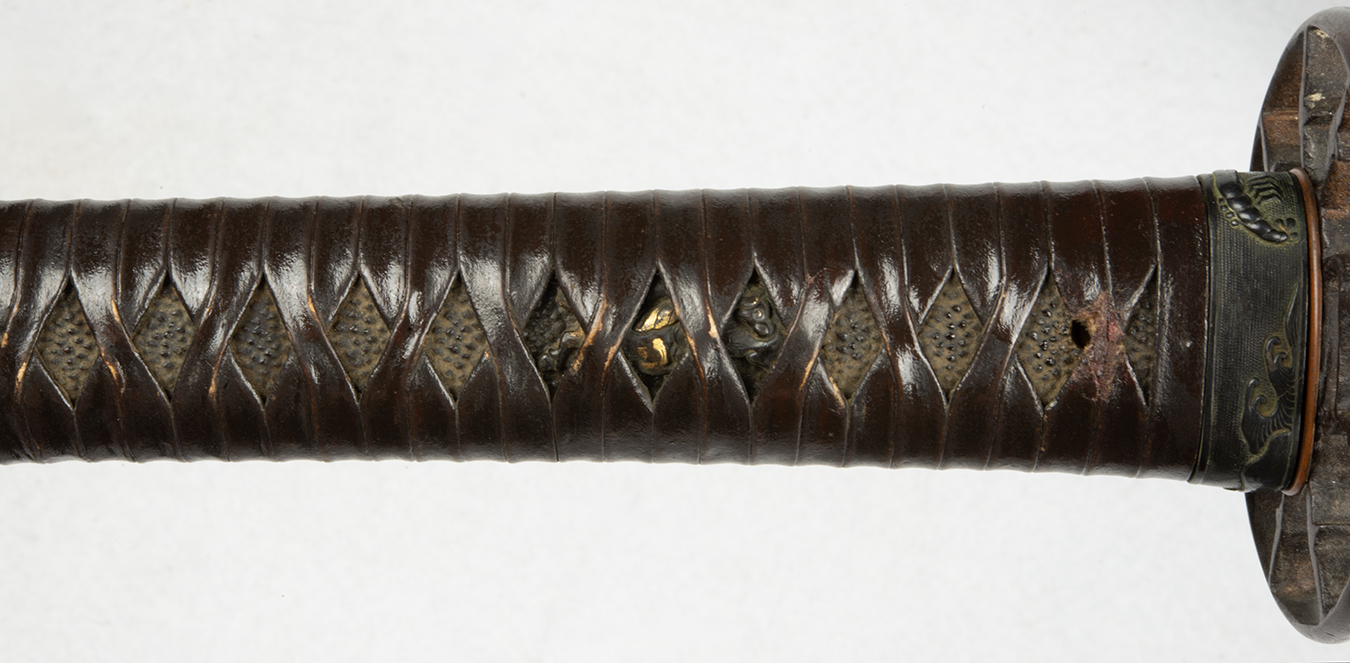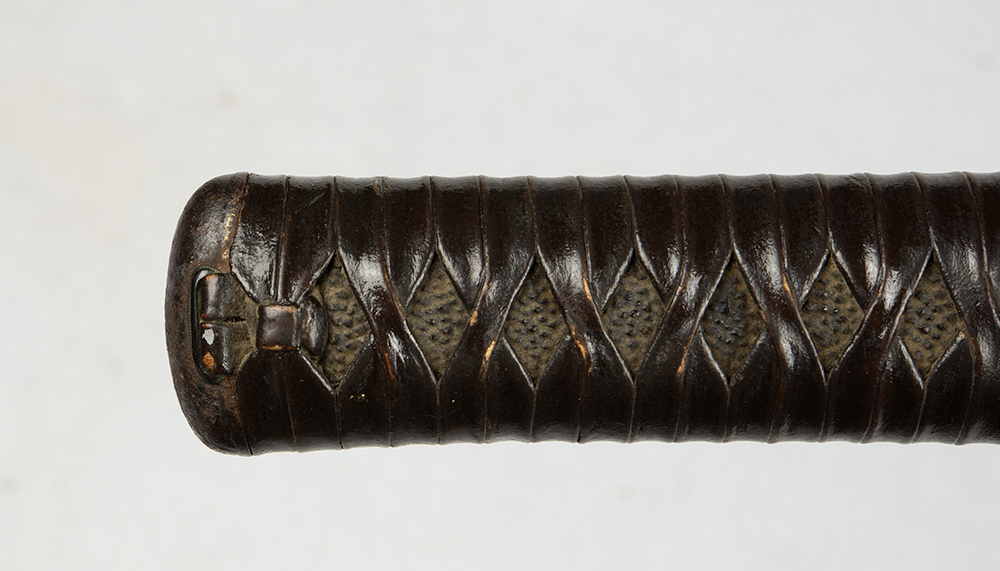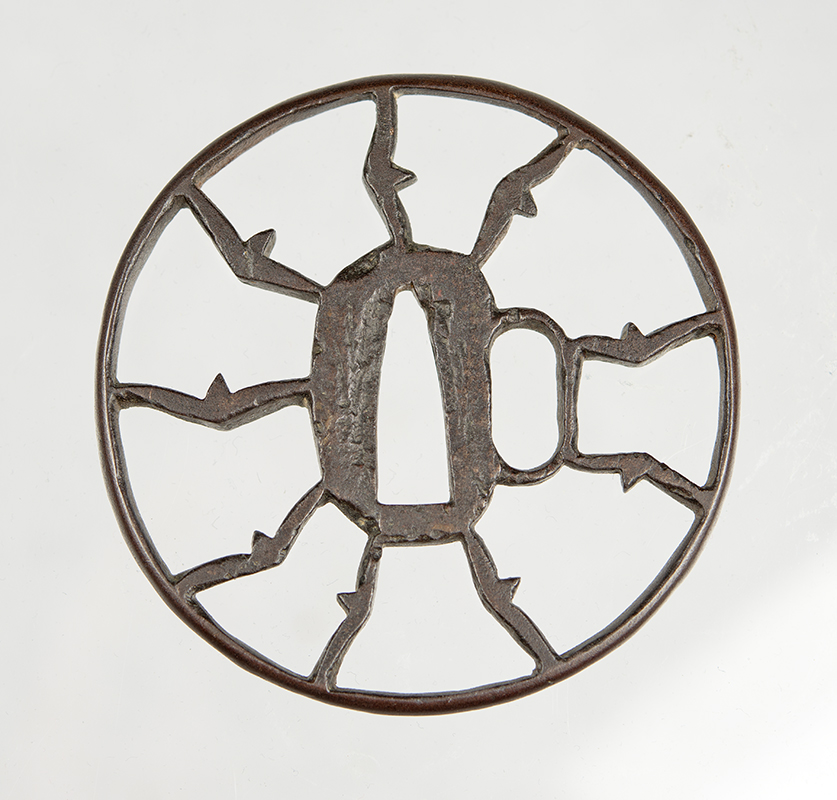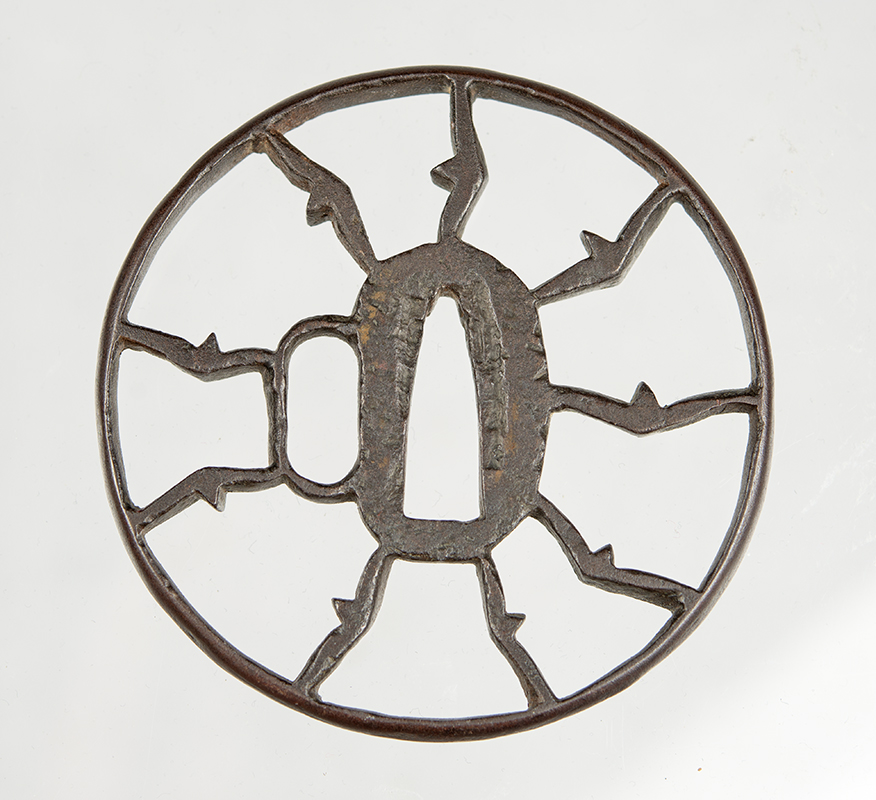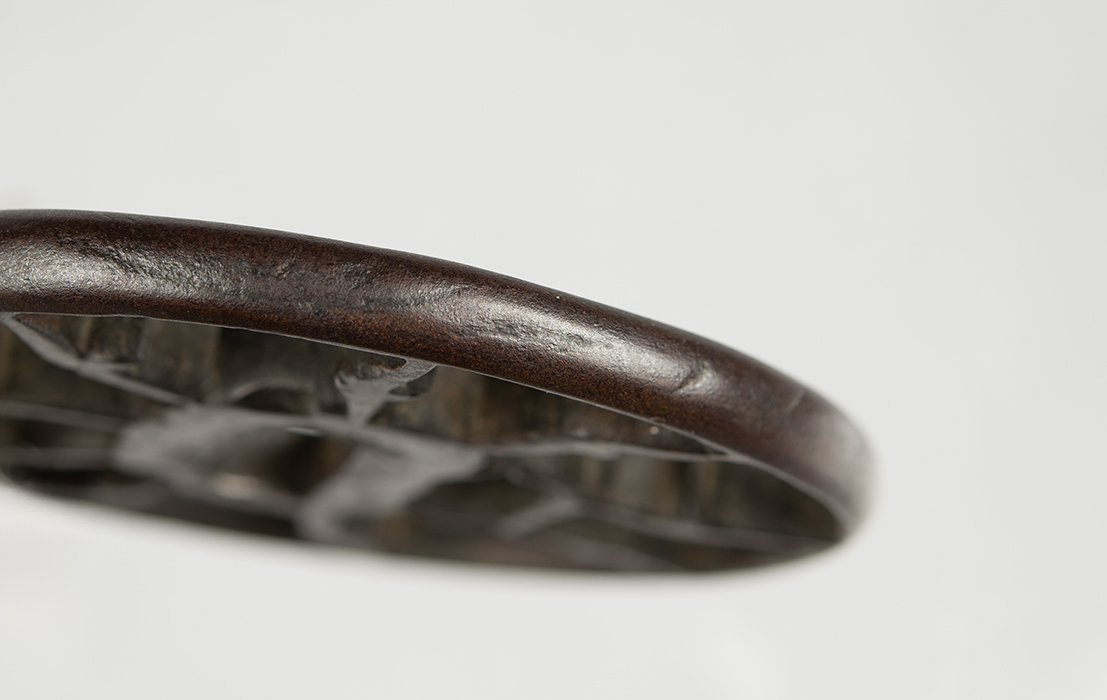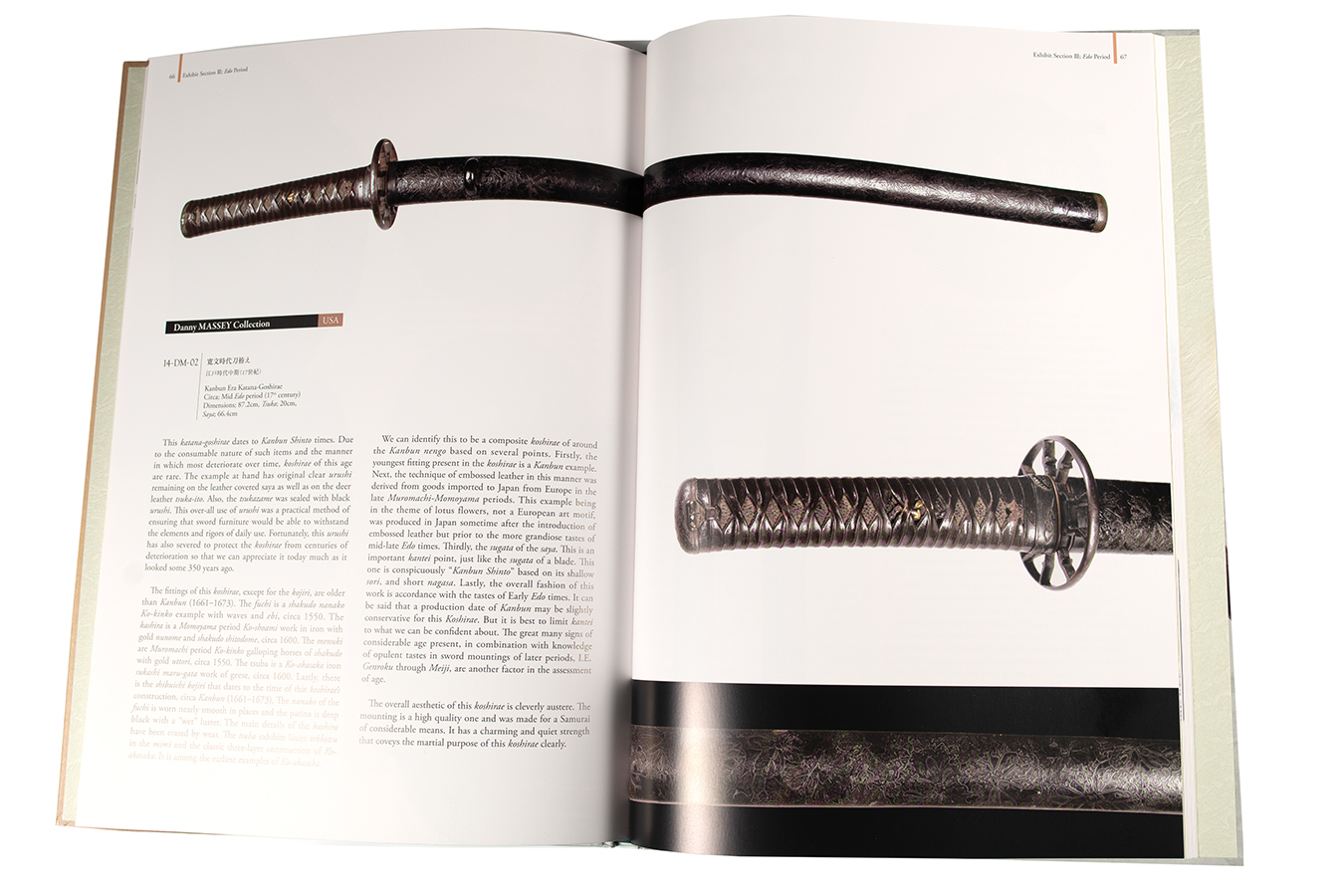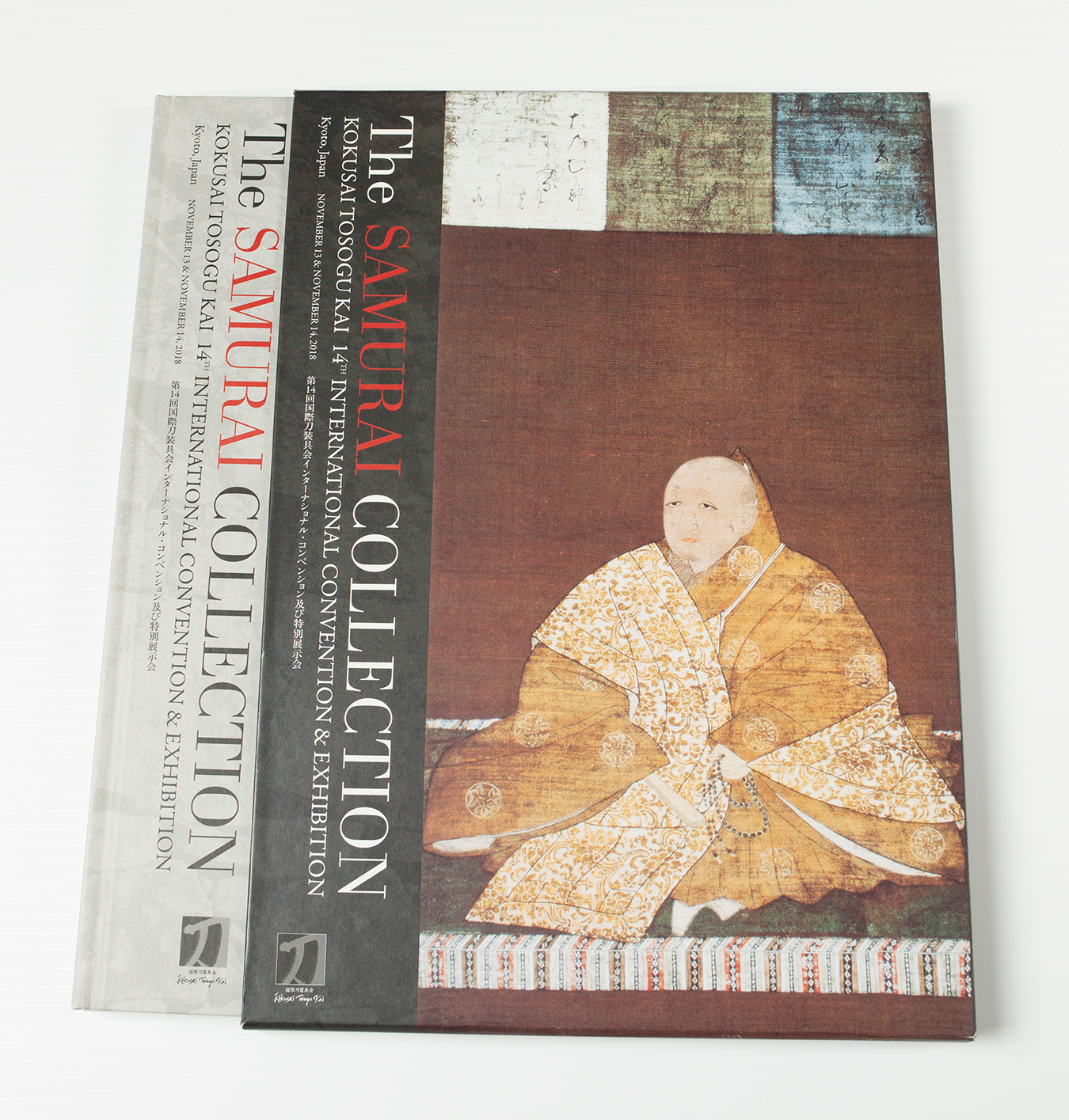寛文時代刀拵え
Kanbun Era Katana Koshirae
Published: Kokusai Tosogu Kai 2018
江戸時代中期(17 世紀)
Kanbun Era Katana-Goshirae
Circa; Mid Edo period (17th century)
Dimensions; 87.2cm, Tsuka nagasa; 20cm, Saya nagasa; 66.4cm
This katana-goshirae dates to Kanbun Shinto times. Due to the consumable nature of such items and the manner in which most deteriorate over time, koshirae of this age are rare. The example at hand has original clear urushi remaining on the leather covered saya as well as on the deer leather tsuka-ito. Also, the tsukazame was sealed with black urushi. This over-all use of urushi was a practical method of ensuring that sword furniture would be able to withstand the elements and rigors of daily use. Fortunately, this urushi has also severed to protect the koshirae from centuries of deterioration so that we can appreciate it today much as it looked some 350 years ago.
The fittings of this koshirae, except for the kojiri, are older than Kanbun (1661-1673). The fuchi is a shakudo nanako Ko-kinko example with waves and ebi, circa 1550. The kashira is a Momoyama period Ko-shoami work in iron with gold nunome and shakudo shitodome, circa 1600. The menuki are Muromachi period Ko-kinko galloping horses of shakudo with gold uttori, circa 1550. The tsuba is a Ko-akasaka iron sukashi maru-gata work of geese, circa 1600. Lastly, there is the shibuichi kojiri that dates to the time of this koshirae’s construction, circa Kanbun (1661-1673). The nanako of the fuchi is worn nearly smooth in places and the patina is deep black with a “wet” luster. The main details of the kashira have been erased by wear. The tsuba exhibits linier tekkotsu in the mimi and the classic three-layer construction of Ko-akasaka. It is among the earliest examples of Ko-akasaka. .
$4500
nihontocraft@bellsouth.net

